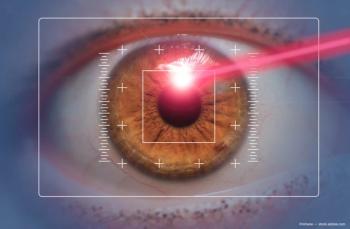
Novel administration of anecortave acetate sustains lower IOP
A novel route of administration of anecortave acetate suspension (Retaane, Alcon Laboratories) by anterior juxtascleral depot in the sub-Tenon's space may represent a new paradigm in glaucoma treatment.
Key Points
Eighty-five patients with a diagnosis of OAG without pseudoexfoliation or pigment dispersion participated in the 12-month, multicenter, proof-of-concept study. Patients with ocular hypertension were excluded. In addition to a diagnosis of OAG, patients also had to have visual field changes, an IOP between 24 and 36 mm Hg in the studied eye, changes in the optic nerve that were consistent with glaucoma, and a cup-to-disc ratio of 0.9 or less.
The anterior juxtascleral depot was placed 3 to 5 mm from the limbus between the 4 and 8 o'clock positions, inferiorly, and injected slowly over the course of 30 to 90 seconds using a 30-gauge needle, Dr. Robin said.
This placebo-controlled study was designed conservatively because all patients had confirmed glaucoma and required a wash out. It was believed that, after a wash out of 1 month and 6 weeks without adequate IOP control, patients should resume topical therapy if IOP was not less than 21 mm Hg.
The patients will continue to be assessed clinically at 6-week intervals throughout the 6-month time point and will be followed to assess the safety until 12 months.
3-month data
At the 3-month evaluation, the mean change in IOP was –2% among the patients assigned to receive the vehicle, –15% among those assigned to the 3-mg dose (p = 0.0536), –16% among those assigned to the 15-mg dose (p = 0.0526), and –19% among those assigned to the 30-mg dose (p = 0.0120), Dr. Robin reported.
"For those patients who meet the treatment success definition specified by the protocol, the mean decreases in IOP in the three active treatment groups at the 2-week evaluation were maintained at the 3-month evaluation, a result that is in contrast to the decrease in the vehicle arm that was not maintained," he pointed out.
Newsletter
Don’t miss out—get Ophthalmology Times updates on the latest clinical advancements and expert interviews, straight to your inbox.
















































.png)


